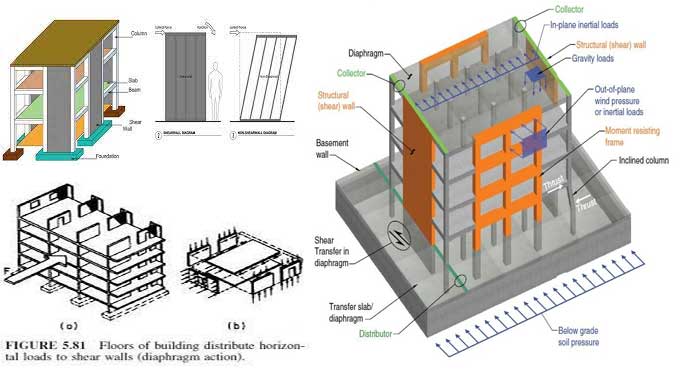
Optimization of load distribution by Shear Walls and Bends in Construction
As far as construction goes, load distribution is one of the most crucial factors. When loads are distributed properly, bends and shear walls are less likely to be damaged or fail. Accidents and costly repairs can occur when common mistakes are made when distributing loads.
Importance of Load Distribution Properly
Building a strong structure, whether it's a wall, a house, or even just muscles, depends on how the load is distributed.
There are a number of problems that can arise from uneven loads, including cracks and weakness, as well as tipping and collapsing.
This is due to the fact that it distributes weight more evenly across a structure, preventing these issues. Furthermore, properly distributed loads improve stability as well. Make sure the loads are evenly distributed to build something that will last.
3 Things to Remember for Optimal Load
Properly Distribution of Load
Exercises should target specific muscles, as well as how those muscles are used during lifts, when creating a workout schedule. A squat, for instance, will heavily tax both the quadriceps and glutes at the same time, while leg extensions are primarily quadriceps focused.
Consequently, if your goal is balanced development, make sure that your routine incorporates a combination of compound movements, isolation exercises, and accessory exercises. You can ensure that each muscle group is adequately trained by structuring your workouts this way.
Avoid Basic Mistakes
It is common for people to concentrate too much on one rep range while neglecting others when trying to build muscle - either lifting heavy weights for low reps or lighter weights for high reps. Try varying things up by doing some sets in the 4 to 6 rep range, 8 to 10 rep range, or even 12 plus reps - you will see better overall results.
Proper Technique Applications
The pre fatigue will allow you to reach failure faster on the compound lift, resulting in a more hypertrophic response. Performing isolation movements for a muscle group before compound movements is another tip for optimal load distribution.
Don't forget to include dead and live loads in your calculations. Load distribution should take into account second order effects if you need help with this type of analysis, consult a professional. To avoid hazards and risks, follow all safety guidelines.
Merits of Optimal Load Distributions
Buildings, bridges, and even simple pieces of furniture require load distribution to function properly.
Overall Stability Improvement
The more evenly weight is distributed throughout a structure, the more stable it is. By doing this, it lowers the risk of one area, if left unchecked, becoming too strained and collapsing. In contrast to those that aren't properly optimized, bridges that have well optimized loads can support significantly more weight.
Avoid Uneven Tear & Wear
By optimizing load distribution, building materials will be able to wear evenly in a more efficient manner. An even distribution of weight reduces the possibility that a concentrated force will cause localized damage. As a result, your materials can last longer and you can avoid costly repairs or replacements in the future.
Stress Reduction
A further benefit of load balancing is that it reduces stress on individual components. When a structure is not balanced properly, it puts unnecessary pressure on certain areas, increasing the risk of failure.
Nevertheless, a structure able to withstand greater pressures with a reduced risk of failure is a structure whose loads are properly distributed. The benefits of optimized load balancing include safety improvements and cost reductions.
To get more details, watch the following video tutorial.
Video Source: American Wood Council


